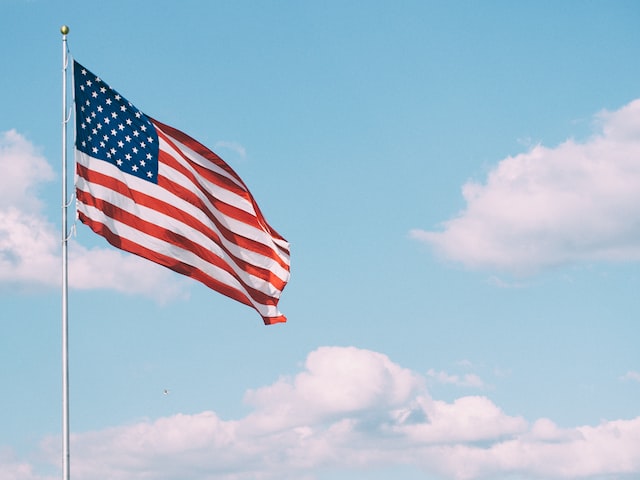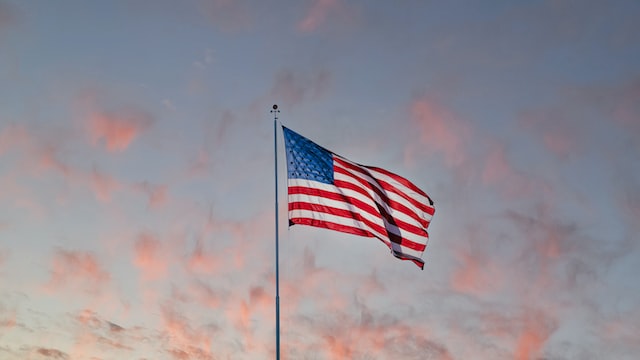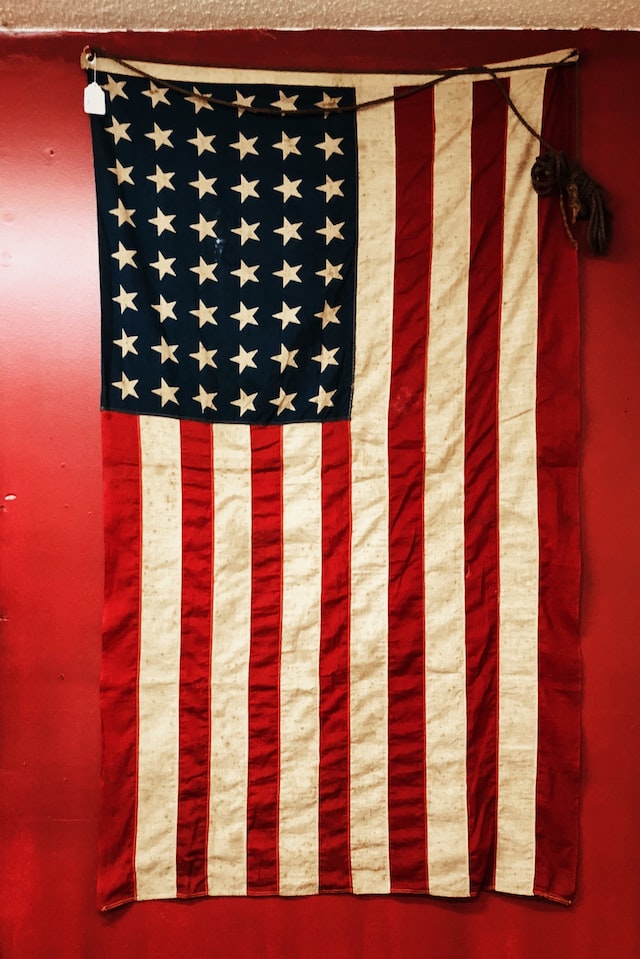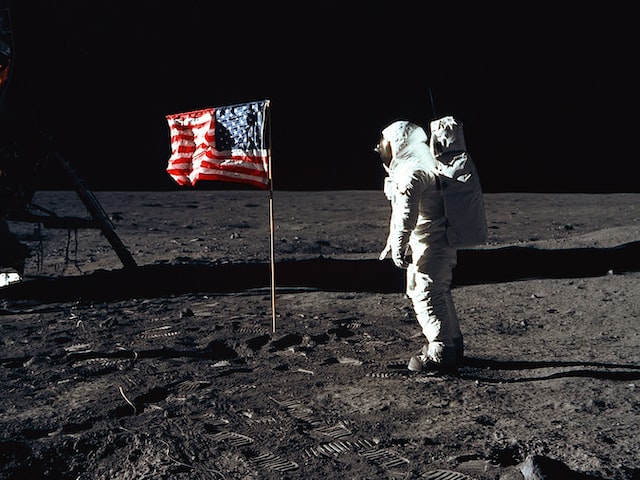Interesting American Flag Facts for Kids [Things You Should Know]
For Americans all across the world, the American flag serves as a symbol of patriotism. Did you know that the American flag is honored on a particular day in June? Flag Day is celebrated on 14th June every year. The American flag will consist of thirteen alternate red and white stripes with a union of thirteen white stars in a blue field to signify the new constellation. The decision was taken in response to the special committee’s report tasked with making design recommendations for the flag.

American Flag’s History
Since the new union of 13 states adopted the flag, it has been altered 26 times. The 48-star version held the record for the most extended period; the flag remained unchanged for 47 years until the 50-star version officially took over on July 4, 1960 (the first July 4 after Hawaii’s admission to the union on August 21, 1959). The current flag of the United States with 50-stars still holds the record.

Basic Facts About The American Flag
- The United States lacked an official national flag on July 4, 1776, when the Declaration of Independence was signed.
- On June 14, 1777, the Continental Congress approved the flag with thirteen alternate red and white stripes with a union of thirteen white stars in a blue field.
- The Grand Union Flag has long been referred to as the “First National Flag”, even though it has never held any official status.
- George Washington wore it during the American Revolutionary War and served as the inspiration for the first official U.S. flag design.
- There have been 50 white stars since 1960, one for every state, with six white and seven red stripes representing the first 13 colonies.
Fun American Flag Facts For Kids
It has many names.
The American flag has numerous alternative names, including Old Glory and the Stars and Stripes. The flag’s colors have no special significance; white denotes innocence and purity, red strength and courage, and blue justice, perseverance, and watchfulness under the coat of arms.

Different Official Versions
The American flag has 27 official versions, each with a different number of stars. President Eisenhower suggested an updated flag when Alaska and Hawaii were designated states 49 and 50, respectively. Alaska joined on January 3, 1959, and Hawaii became a member on August 21, 1959. The 50-star flag was not flown until July 4, 1960.
It was designed by a high school student and made by a seamstress.
Ohio high school student Robert G. Heft, then 17 years old, submitted his design for the flag as part of a class assignment. President Dwight D. Eisenhower selected over 1,500 other submissions, which are still in use today. Can you believe Robert’s project received a B- grade?

George Washington wore clothes fashioned by seamstress Betsy Ross. Washington invited her in June 1776 to make the first American flag, and the rest, as they say, is history.
There are different rules for the American Flag regarding its flow in different situations
Flag during mourning: The flag is flown at half-staff for 30 days as a symbol of the country being in sorrow after a tragedy like September 11th, 2001, or death like Abraham Lincoln. Aboard land, it’s referred to as a “half staff,” and on a ship, a “half mast.”
For flowing at night: On the website for the U.S. Flag Code, it is stated that the American flag must be illuminated when flown at night, that it should never be flown under inclement weather, and that it can only be flown upside down to indicate a time of emergency, that it must be raised quickly and lowered slowly, and that no other flag may be flown above it. Every school building should fly the flag when classes are in session. The idea that if the flag reaches the ground, it must be burned is untrue. If the flag is damaged and can no longer be flown, it must be burnt.
At Civilian Residences: Most people display a flag in front of their residences during national holidays, including Memorial Day, Veterans Day, Presidents‘ Day, Flag Day, and Independence Day; however, some people do it all year long. Small flags are frequently placed on Memorial Day near war memorials and close to the graves of American war veterans. The flag is often flown at half-staff till noon to remember those who died while serving in American wars.

Flag lowers to no earthly ruler: If an ensign is replying to a salute from a foreign ship, they should never dip the flag to them or anything else. This custom originated during the London Olympics of 1908, when nations were asked to present King Edward VII with a flag dip. The American flag bearer declined. Although its origin is unknown, team captain Martin Sheridan is credited with declaring, “This flag lowers to no earthly ruler.”
Flag on space shuttles: Every human-crewed U.S. spacecraft, including Mercury, Gemini, Apollo Command/Service Module, Apollo Lunar Module, and the Space Shuttle, has flown with the flag. However, the “streaming” rule was not adhered to, and these flags were placed with the stripes running horizontally. This was done because Mercury, Gemini, and Apollo could not fly or land horizontally in the atmosphere.
Which shoulder will carry the flag?: Every American astronaut since the Gemini 4 crew has worn the American flag on the left shoulder of their space suit, except for the crew of Apollo 1, whose flags were worn on the right shoulder. The canton was, in this instance, to the left.
The American Flag has a Stripe and a Star for each of the states.

The flag kept changing as new states were admitted. Initially, a stripe and a star were added for each new state. Congress, however, ruled in 1818 that there would always be 13 stripes, and the number of stars would correspond to the number of states.
A Wisconsin teacher and his students were the first to honor the flag’s birthday.
The Battle of the Brandywine, which took place on September 11, 1777, saw the introduction of this particular flag design. On February 14, 1778, when the Ranger, commanded by Captain Paul Jones and flying the Stars and Stripes, landed in a French port, foreign naval ships first honored the American flag. Early in 1778, the American army took a British fort in Nassau, Bahamas, and raised the flag over a foreign country.
“The Star-Spangled Banner” was frequently flown as a sign of national pride and solidarity.
After seeing the British attack on Fort McHenry, Francis Scott Key created the lyrics to the national anthem. Despite the British “rockets’ scarlet brightness, the bombs bursting in air,” he noticed that the “star-spangled banner still waves over the land of the free and the home of the brave.” The National Museum of American History at the Smithsonian Institution keeps what’s left of the 15-star, 15-bar flag that inspired the national anthem on permanent display. The public was moved by “The Star-Spangled Banner.”
There is one American Flag even beyond the Earth.
Five of the six American flags erected on the moon are still in place. The original, which Neil Armstrong planted on the Apollo 11 mission, is no longer standing.

The American Flag was used as a postage stamp.
A modest monochrome illustration of the 48-star flag was initially featured in the General Casimir Pulaski issue in 1931. On July 4, 1957, the United States published its first postage stamp with the flag as its sole subject (Scott catalog 1094).
The American Flag can be ordered officially.
You read that correctly; A flag flown over the U.S. Capitol is available for purchase. How to do it: Make sure you know who to contact because you’ll need to speak with your state senator. Fortunately, the Senate Directory exists. Find the constituent services page on your senator’s website after you’ve located them. You can soon have your very own Capitol flag if you follow the detailed ordering instructions that your state senator provides. Very cool!
The destruction of flags “should be done with dignity.”
Although many people believe that burning the flag is a disrespectful gesture, that isn’t necessarily the case. In fact, according to the National Flag Foundation, this is the best method of getting rid of an American flag that is beyond repair or damaged beyond repair.
Conclusion
These were some of the interesting facts about the American Flag. Want to learn more about other countries’ fun facts? Click here.
